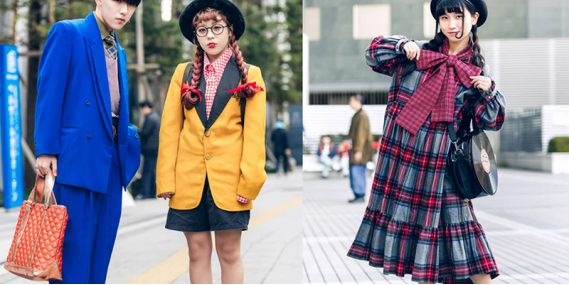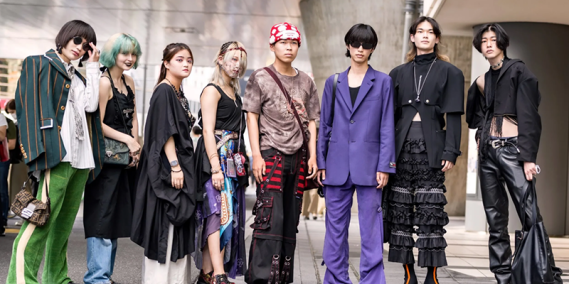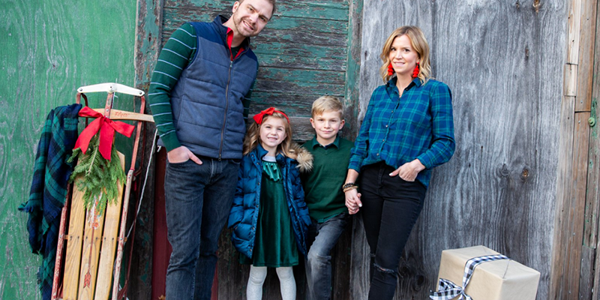Fashion
Family Matching Outfits: Picture-Ready Looks You’ll Love
1757645952000
Have you ever noticed how Japanese fashion manages to look both effortless and inventive simultaneously? Walk through Tokyo's busy Shibuya crossing, the quiet streets of Kyoto, or the coastal towns of Kanagawa, and you'll see people dressed in ways that feel unique yet approachable. It's not just about trends—it’s about how everyday clothes are styled with creativity, subtle detail, and confidence.
Have you ever noticed how Japanese fashion manages to look both effortless and inventive simultaneously? Walk through Tokyo's busy Shibuya crossing, the quiet streets of Kyoto, or the coastal towns of Kanagawa, and you'll see people dressed in ways that feel unique yet approachable. It's not just about trends—it’s about how everyday clothes are styled with creativity, subtle detail, and confidence.
Streetwear is one of the most recognisable sides of Japanese fashion. The style thrives in neighbourhoods like Harajuku, where bold looks are part of the culture. But you don't need neon hair or outlandish costumes to take inspiration—everyday streetwear is actually much more wearable.

Picture an oversized white T-shirt paired with wide-leg denim jeans and chunky sneakers. The look is simple, but the loose fit and balanced silhouette give it a street-style edge. Add a bucket hat, crossbody bag, or a graphic tote, and you’ve got an outfit that stands out without feeling too flashy.
Not everyone wants to wear oversized clothing, and that's where Tokyo-inspired minimal chic comes in. Professionals in Japan often gravitate toward clean lines, neutral colours, and high-quality fabrics. The result is clothing that looks polished but doesn't feel stiff.
Imagine a grey blazer worn over a soft black turtleneck, paired with slim trousers and loafers. The palette is neutral, but the fit and fabric make the outfit look sharp. It's perfect for the office, but it works just as well for dinner after work.
Layering is more than just practical in Japan—it's a cornerstone of fashion. Since the climate changes significantly between seasons, people often use layering to adapt while making it stylish.
Take the example of a long shirt dress. On its own, it's simple. Add a cropped sweater over it, and suddenly the proportions become interesting. Pair it with sneakers for a casual vibe, or boots for a sharper look.
Utility wear is another significant influence in Japanese fashion. Jackets, vests, and trousers inspired by work uniforms are popular not just for their practicality but for their style. Imagine an olive-green work jacket layered over a plain white T-shirt, with black straight trousers and white sneakers.
The look is casual but structured, making it suitable for commuting or meeting friends. Add a satchel or backpack, and you’ve got an outfit that looks neat without being formal.
Kawaii, or "cute" style, often gets associated with colourful wigs and exaggerated costumes, but in daily life, people incorporate it in subtle ways. The everyday kawaii look uses pastels, soft fabrics, and playful details.
Think of a light pink cardigan worn over a white T-shirt, matched with a skater skirt and sneakers. Add hair clips, knee socks, or a tote with a small plush keychain, and you have a look that feels youthful and fun without being overwhelming.
Japanese fashion often seamlessly blends traditional elements with modern styles. One example is the haori, a kimono-style jacket that people wear casually today. A patterned haori layered over a plain T-shirt, paired with slim trousers and sandals, creates a look that is both contemporary and rooted in heritage.

It works exceptionally well for relaxed weekends or gatherings where you want something different but not too formal. Some modern designers also incorporate kimono fabrics into jackets or skirts, giving traditional patterns a fresh place in everyday fashion.
One of the quiet strengths of the Japanese style is the ability to make monochrome look exciting. Black-and-white outfits are everywhere, but they're never dull. For example, pair an oversized black hoodie with wide black trousers and crisp white sneakers.
The outfit is simple in colour but relies on silhouette and texture to stand out. A silver chain or minimal watch adds just the right touch. Another option is to go all white—an oversized white shirt, light-colored trousers, and white sneakers. It gives a clean, futuristic vibe while still being comfortable.
Denim is a favourite fabric in Japan, but it's worn differently than in the West. Instead of distressed or rugged styles, Japanese denim often features a neat and structured appearance. Picture dark blue straight jeans paired with a crisp button-down shirt and a bomber jacket. Roll up the cuffs slightly, tuck the shirt loosely, and add sneakers or boots.
The result is a sharp look that’s casual but not messy. Japanese denim brands are also renowned worldwide for their craftsmanship, and wearing their jeans has become both a fashion and cultural choice.
Preppy fashion inspired by school uniforms is another common everyday look. It’s neat, playful, and versatile. A pleated skirt with a sweater vest worn over a collared shirt creates a youthful yet polished outfit.
Pair it with loafers and knee socks for a classic vibe, or swap in sneakers for a more relaxed version. Varsity jackets and blazers also complement this look, allowing for a slightly more formal appearance without compromising the casual feel.
Comfort is never sacrificed in Japanese fashion. Oversized outfits are popular, but they’re styled with care so they don’t appear sloppy. Imagine an oversized sweatshirt paired with wide sweatpants and chunky sneakers. Add a beanie and a canvas tote, and the outfit feels relaxed yet purposeful. Neutral tones like beige, grey, and navy keep it looking stylish instead of lazy.
Athleisure in Japan seamlessly blends into daily life. Instead of flashy sports logos, outfits tend to lean more minimalist. Slim joggers paired with a crewneck sweatshirt and a lightweight windbreaker create a sporty look that works for both errands and casual meetups. White sneakers are a must, as they tie the outfit together while keeping it clean and polished.
What makes Japanese fashion inspiring is its balance and harmony. It doesn't try too hard, yet it still feels inventive. Whether it's the oversized fits of Harajuku streetwear, the clean lines of Tokyo minimalism, or the soft touches of kawaii style, there's something to borrow for your own wardrobe.
Do you like this article?
Fashion
1757645952000
Mother & baby
1757645852000
Mother & baby
1757645852000
Career & Education
1757645873000
Mother & baby
1757645852000
General Finance
1757645995000
Fashion
1757645952000
General Finance
1757645995000
Fashion
1757645952000
Fashion
1757645952000








